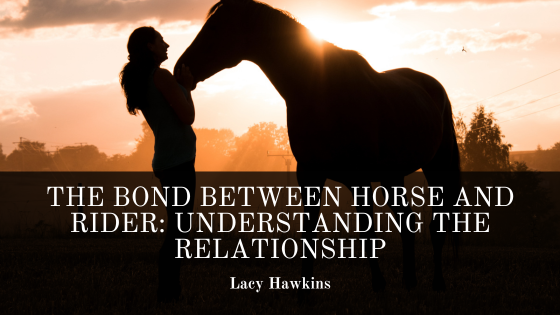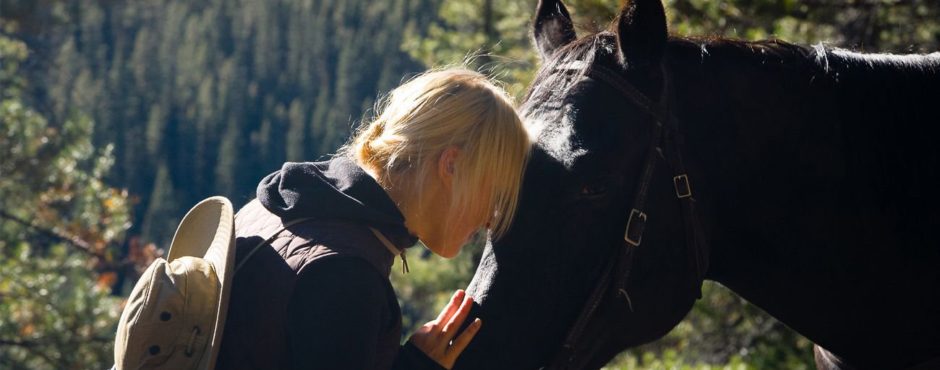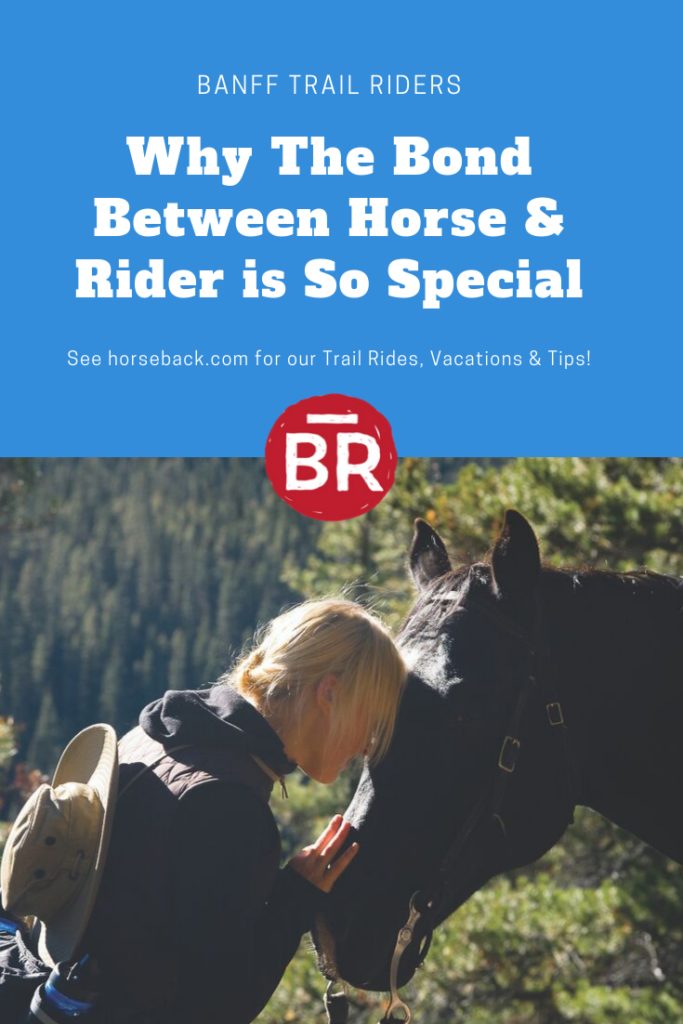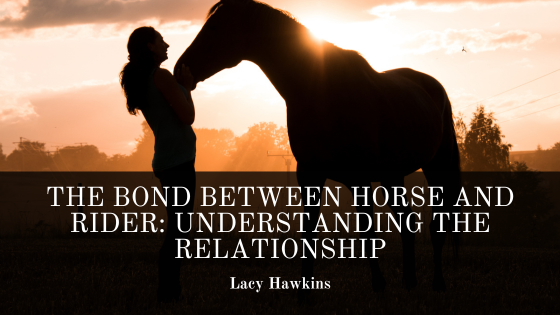Imagine the feeling of complete trust as you sit atop a powerful horse, both of you moving together as one. This bond between a rider and their horse is truly special, and it can be a journey filled with both challenges and rewards. As a horseback riding enthusiast, you understand the importance of building a connection with these magnificent creatures. Whether you’re a seasoned rider or just starting out, this article explores the fascinating world of horseback riding, highlighting the journey of trust that blossoms between a rider and their horse. Discover the secrets behind this unique bond and how it can elevate your riding experience to new heights.
The Importance of Trust in the Relationship Between a Rider and their Horse
Horseback riding is not just a physical activity; it is also a journey of trust and connection between a rider and their horse. The bond that is built between the two is essential for a successful and fulfilling riding experience. Trust forms the foundation of this relationship, allowing for effective communication, mutual understanding, and a sense of partnership. In this article, we will explore the different aspects of trust in the rider-horse bond and delve into how it can be developed and strengthened.

Understanding the Rider-Horse Bond
The rider-horse bond is a unique connection that goes beyond a rider simply utilizing a horse as a means of transportation. It is a partnership based on trust, mutual respect, and shared experiences. The horse becomes more than just a tool; it becomes a companion, a teammate, and a friend. Understanding the intricacies of this bond is crucial in building and maintaining trust.
Building Trust through Communication
Effective communication lies at the heart of any successful relationship, including the relationship between a rider and their horse. However, communicating with a horse is not like conversing with another human being. It requires an understanding of non-verbal cues, body language, and the development of a mutual language between rider and horse.
Non-Verbal Communication between Rider and Horse
Horses are highly perceptive animals that rely heavily on non-verbal communication. Riders must learn to utilize their body language to convey their intentions and emotions to the horse. Simple shifts in weight, subtle movements, and even eye contact can communicate a wealth of information to the horse.
The Importance of Body Language
Body language plays a significant role in establishing trust and understanding between a rider and their horse. The way a rider carries themselves, their posture, and their movements speak volumes to the horse. A relaxed and confident rider will inspire trust and assure the horse that they are in capable hands.
Using Voice and Verbal Cues
While horses primarily respond to non-verbal cues, riders can also incorporate voice commands to enhance communication. Consistent use of specific verbal cues and tones can help the horse understand the desired action or maneuver. However, it is essential to ensure that the horse associates the voice commands with the corresponding non-verbal cues to prevent confusion.
Developing a Mutual Language
Building trust through communication involves developing a mutual language between rider and horse. This language is built over time through consistent training, repetition, and reinforcement. By establishing clear and consistent cues for desired actions, the rider and horse can develop a shared understanding, further strengthening their bond.
Building Trust through Training and Groundwork
Groundwork plays a vital role in establishing trust and building a strong foundation for the rider-horse relationship. It allows the horse to become familiar with the rider’s commands, learn basic skills, and develop trust in the rider’s guidance and leadership.
Importance of Groundwork in Establishing Trust
Groundwork serves as a crucial starting point for developing trust between a rider and their horse. It allows the horse to become comfortable with the rider’s presence, learn to follow commands, and develop respect for their handler. By establishing a solid groundwork foundation, the horse gains confidence in the rider’s guidance, which translates into trust.
Teaching and Reinforcing Basic Commands
During groundwork, riders introduce and reinforce basic commands to the horse. Whether it’s teaching the horse to move forward, stop, turn, or back up, consistent training and reinforcement help the horse understand and respond to these commands. Every successful execution of a command reinforces the trust between horse and rider.
Progressing to Advanced Training Exercises
As the horse becomes more confident and responsive through groundwork, riders can progress to advanced training exercises. These exercises not only further develop the horse’s skills but also deepen the bond between rider and horse. Exercises such as lateral movements, collection, and extension require trust and cooperation from both parties, strengthening their connection.
Positive Reinforcement and Trust Building
Positive reinforcement plays a crucial role in trust-building during training. Rewarding the horse for correct responses and desired behavior not only reinforces the training but also instills confidence in the horse. Through positive reinforcement, the horse learns to associate trust, guidance, and cooperation with the rider, further deepening the bond.
The Psychological Aspects of the Rider-Horse Bond
Understanding the psychological aspects of the rider-horse bond is essential in developing a strong and trusting relationship. Both the horse’s mind and behavior, as well as the rider’s mindset, contribute to the dynamics of the bond.
Understanding the Horse’s Mind and Behavior
Horses are highly sensitive animals with complex behaviors and emotions. Understanding their instincts, natural herd dynamics, and fear responses can provide valuable insights into their mindset. By understanding how horses think and react, riders can better empathize with their equine partners, building trust through patience, support, and understanding.
The Rider’s Mindset and its Impact on Trust
The rider’s mindset plays a significant role in building trust and influencing the rider-horse bond. Horses are perceptive creatures that can sense a rider’s emotions, insecurities, and anxieties. It is crucial for riders to maintain a positive, calm, and confident mindset, as this reassures the horse and fosters trust.
Developing Emotional Connection and Trust
Beyond the physical aspects, building an emotional connection is vital in the rider-horse bond. Horses are social animals that seek companionship and connection. Riders can foster emotional connection by spending quality time with their horse, understanding their individual personalities, and providing care and attention. This emotional bond contributes to trust and strengthens the overall relationship.

Establishing Trust through Mutual Respect and Care
Trust in the rider-horse relationship extends beyond training and riding. Establishing mutual respect and providing proper care for the horse are foundational aspects of trust-building.
Providing Proper Care and Maintenance for the Horse
A well-cared-for horse is a happy and trusting horse. Riders must prioritize the horse’s physical and mental well-being by providing proper nutrition, regular veterinary care, and a safe and comfortable living environment. Meeting the horse’s needs and ensuring its overall health and happiness contribute to trust and a strong bond.
Establishing Boundaries and Respectful Handling
Mutual respect is crucial in a trusting relationship. Riders must establish clear boundaries and practice respectful handling when interacting with their horse. Consistency in behavior and expectations helps the horse feel secure and respected, ultimately fostering trust. Treating the horse with kindness, patience, and understanding reinforces the bond and builds mutual trust.
Recognizing and Responding to the Horse’s Needs
Understanding and responding to the horse’s needs is a vital aspect of trust-building. Horses have individual preferences, fears, and communication styles. By observing and recognizing their cues, riders can address any discomfort, fear, or stress the horse may experience. Being attuned to the horse’s needs and providing appropriate support builds trust and strengthens the relationship.
The Impact of Trust on Performance and Success
Trust is not only integral to the rider-horse relationship on an emotional level but also plays a significant role in the performance and success of both horse and rider.
Enhanced Performance through Trust
Trust allows the horse and rider to work together harmoniously, enhancing performance in various disciplines. When a horse trusts its rider, it is more willing to respond to cues and perform to its full potential. Similarly, a rider who trusts their horse can ride with confidence and precision, leading to improved performance.
The Role of Trust in Competitive Riding
In the world of competitive riding, trust between horse and rider is paramount. The partnership built on trust enables the duo to navigate challenging courses, execute complex maneuvers, and showcase their skills with confidence. Trust provides the foundation for success in competitive riding, allowing both horse and rider to excel in high-pressure situations.
Overcoming Fear and Achieving Breakthroughs
Trust empowers both horse and rider to overcome fear and achieve breakthroughs. Through trust, riders can conquer their fears and insecurities, knowing that their horse is a reliable and supportive partner. Similarly, horses can overcome their natural flight response and trust in the rider’s guidance, allowing them to face challenging obstacles and situations with courage and confidence.

Building Trust through Patience and Time
Building trust is not an overnight process; it requires patience, time, and consistent effort. Rushing the development of trust can be counterproductive and may lead to setbacks. Taking the time to nurture the bond between horse and rider is essential for establishing a deep connection and partnership based on trust.
Understanding the Importance of Patience in the Process
Patience is key when building trust. Horses are sensitive and intuitive beings that require time to adjust, process information, and build confidence. Rushing the training process or demanding too much too soon may erode trust and hinder progress. Patience allows the bond to develop naturally, resulting in a more solid foundation of trust.
Gaining Trust Over Time
Trust is earned through consistent, positive experiences over time. Riders must invest time and effort into their relationship with the horse. By consistently demonstrating respect, understanding, and providing positive reinforcement, trust gradually builds and strengthens. Every small victory and successful experience contributes to the overall trust between rider and horse.
Developing a Deep Connection and Partnership
Patience and time contribute to the development of a deep connection and partnership between rider and horse. As trust grows, the relationship transcends the boundaries of training and riding. It becomes a bond grounded in love, support, and shared experiences. Through patience and time, riders can develop an unbreakable connection and a true partnership with their horse.
Experiences and Stories of Trust Between Riders and Horses
Personal experiences and stories reflect the power of trust and its transformative effect on the rider-horse relationship. Hearing these tales of trust and partnership can inspire others and serve as a source of motivation and encouragement in their own journeys.
Personal Experiences of Trust and Partnership
Many riders have their own personal stories of trust and partnership with their horses. These anecdotes often highlight the challenges faced, breakthrough moments, and the immense joy that comes from a strong and trusting bond. Sharing personal experiences can provide valuable insight and inspire others in their own pursuit of trust and connection.
Heartwarming Stories of Trust and Rescue
Heartwarming stories of trust and rescue demonstrate the profound impact trust can have on horses that have faced adversity. Whether it’s a horse rescued from neglect or abuse, witnessing these horses learn to trust again is a testament to the resilience of the rider-horse bond. These stories serve as a reminder of the transformative power of trust and the potential for healing and growth.
Lessons Learned from Trust-Based Relationships
Trust-based relationships yield invaluable lessons that can be applied to various aspects of life. From patience and perseverance to effective communication and empathy, the lessons learned from trust-based rider-horse relationships can be translated into other relationships and pursuits. These lessons inspire personal growth and development while fostering a deeper appreciation for the power of trust.

Trust-Building Exercises for Riders and Horses
Trust-building exercises can provide practical tools for riders to strengthen their bond with their horses. These exercises focus on reinforcing trust, communication, and cooperation between horse and rider.
Groundwork Exercises for Trust and Connection
Groundwork exercises, such as leading exercises, yielding exercises, and desensitization exercises, help build trust and connection between horse and rider. Through these exercises, riders can establish clear boundaries, improve communication, and develop a deeper understanding of their horse’s behavior and responses.
Building Trust through Obstacle Courses
Obstacle courses challenge both horse and rider and provide an opportunity to strengthen trust. By navigating obstacles together, riders demonstrate their leadership, and horses learn to trust in their guidance and judgment. Obstacle courses foster problem-solving skills, confidence, and mutual reliance.
Exercises to Foster Confidence and Trust
Exercises that focus on building confidence and trust can significantly contribute to the rider-horse bond. These exercises may include introducing new environments, objects, or situations that gradually expose the horse to different stimuli. By guiding the horse through these experiences and providing reassurance, riders help build the horse’s confidence and trust while further strengthening the bond.
The Impact of Trust on the Well-being of Riders and Horses
Trust between rider and horse goes beyond their interactions in the arena. It has a profound impact on the well-being, both physical and emotional, of both the rider and the horse.
The Emotional Benefits of a Strong Rider-Horse Bond
The rider-horse bond provides numerous emotional benefits. Building trust and connection with a horse cultivates feelings of empathy, companionship, and unconditional love. The horse becomes a source of comfort, stress relief, and emotional support. A strong rider-horse bond contributes to the rider’s overall well-being, promoting emotional resilience and happiness.
Promoting Mental and Physical Health through Trust
Trust-based relationships positively impact mental and physical health. Riding and interacting with horses offer opportunities for exercise, outdoor activities, and a sense of purpose. The trust between rider and horse fosters a calming effect, reducing stress and promoting mental well-being. Additionally, the physical demands of riding contribute to improved fitness and overall health.
Trust as a Foundation for Long-term Happiness
Trust establishes a solid foundation for a long-term, fulfilling rider-horse relationship. The trust built between horse and rider deepens over time, enriching the experiences shared and providing a source of joy and happiness. The consistent care, communication, and support in a trusting relationship create a harmonious partnership that can bring immense happiness to both rider and horse.
In conclusion, trust is a fundamental element in the relationship between a rider and their horse. It forms the basis of effective communication, connection, and partnership. Building trust takes time, patience, and consistent effort, but the rewards are immeasurable. The rider-horse bond, rooted in trust, leads to enhanced performance, personal growth, and overall well-being. By nurturing this bond through care, understanding, and mutual respect, riders can embark on a lifelong journey of trust with their beloved equine companions.

